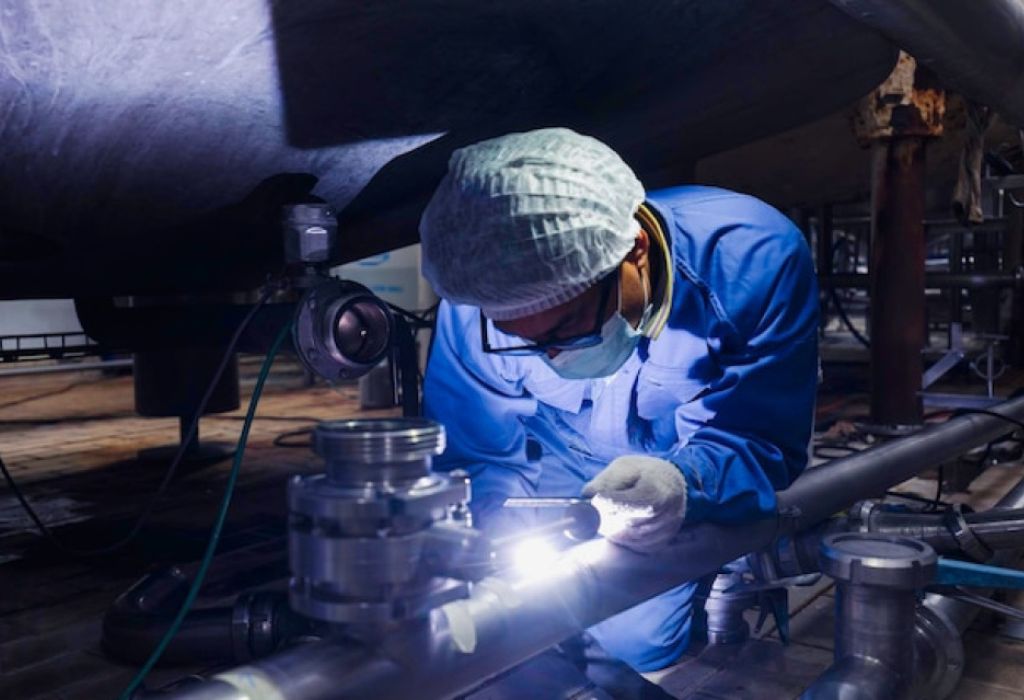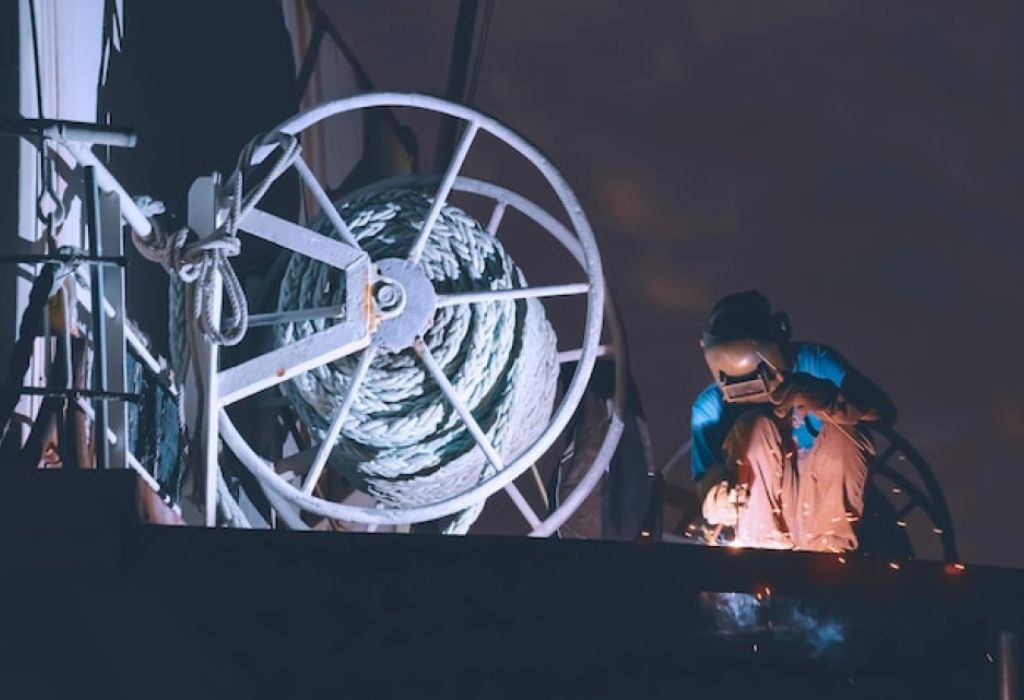Imagine working on aircraft components where precision is everything.
Aerospace welders handle some of the most critical welding jobs in the industry, where even the smallest mistake can affect safety and performance.
This high level of responsibility makes many people wonder how much an aerospace welder actually earns.
Welding for the aerospace sector requires far more than standard skills.
It demands certifications, advanced training, and the ability to work with specialized metals like titanium and aluminum.
With so much expertise involved, salaries in this field are often higher than traditional welding roles. But just how much can aerospace welders expect to make in 2025?
The demand for aerospace welders is growing steadily. According to the U.S.
Bureau of Labor Statistics, the welding industry overall is projected to add more than 42,000 jobs by 2032 (BLS).
Aerospace welding, being one of the most specialized fields, is expected to benefit directly from this growth.
Pay is influenced by several factors, including experience, certifications, and location.
Entry-level aerospace welders earn a modest income, but skilled professionals with years of experience can command impressive salaries.
Some even earn well above the average for welders in other industries.
This article explores everything you need to know about aerospace welder salaries in 2025.
You’ll learn about average pay ranges, the difference experience makes, factors that influence income, and strategies to boost earnings. By the end, you’ll understand why aerospace welding is not only one of the most challenging welding careers but also one of the most rewarding financially.
What Is an Aerospace Welder?

An aerospace welder is a highly skilled professional who works on aircraft and spacecraft components. Their job requires extreme precision because even a small mistake could compromise safety and performance.
Unlike general welding, aerospace welding involves working with specialized metals such as titanium, aluminum, and stainless steel. These materials are commonly used in aircraft engines, fuselages, and critical structural parts.
To qualify for this role, welders must complete advanced training and earn certifications from organizations like the American Welding Society (AWS) or Federal Aviation Administration (FAA). These certifications ensure welders meet strict aerospace standards.
Aerospace welders use a variety of welding techniques. TIG welding is one of the most common because of its ability to create strong, clean welds. MIG welding, electron beam welding, and laser welding are also used depending on the project.
What does an aerospace welder do?
They weld and repair aircraft and spacecraft components with extreme accuracy.
Which metals do aerospace welders work with most often?
They commonly work with titanium, aluminum, and high-grade stainless steel.
Do aerospace welders need special certifications?
Yes. Certifications such as AWS and FAA-approved credentials are typically required.
What welding techniques are used in aerospace work?
TIG, MIG, laser, and electron beam welding are common methods.
Why is aerospace welding more demanding than other fields?
Because the welds directly affect flight safety and performance, precision is non-negotiable.
Salary Overview of Aerospace Welders
In the U.S., the average annual salary for an aerospace welder is about $57,516, which works out to around $28 per hour (Salary.com). Salaries typically range from $47,494 at the low end to $68,154 at the high end, with most welders earning between the 25th and 75th percentiles.
Glassdoor reports a median total pay of $83,695 per year (including bonuses and additional pay) for aerospace welders, with a usual range between $68,000 and $105,000. Hourly pay according to ZipRecruiter averages around $22.26 per hour, showing variation depending on role and location.
Compared to general welders, who earn a median wage of about $51,000 annually, aerospace welders generally make more due to the specialized skills and certifications required.
What is the average salary for an aerospace welder in the U.S.?
Roughly $57,516 annually, or about $28 per hour.
Why do some sources cite much higher pay?
Some include additional compensation, bonuses, or reflect senior-level roles in high-cost regions.
How does aerospace welder pay compare to general welders?
Aerospace welders typically earn more thanks to specialized skills.
Are there large regional differences in salary?
Yes. Regions with major aerospace industries often pay more.
Can bonuses or additional pay raise the total compensation significantly?
Yes. Overtime and performance-based bonuses can push salaries much higher.
How Much Does an Aerospace Welder Make by Experience
Entry-level aerospace welders typically start with annual salaries between $40,000 and $50,000. These positions often require basic certifications and supervised work while gaining specialized skills.
Mid-career aerospace welders, with three to five years of experience, usually earn between $55,000 and $70,000 annually. At this level, welders often have advanced certifications and can work independently on complex projects.
Senior aerospace welders or welding specialists with ten or more years of experience can make $75,000 to $100,000+ per year. These welders may supervise others, handle the most critical tasks, and work in high-demand aerospace hubs.
Highly experienced welders in niche areas, such as electron beam or laser welding, often earn at the top end of the pay scale.
What can an entry-level aerospace welder expect to earn?
Around $40,000 to $50,000 annually.
How much does a mid-career aerospace welder earn?
Typically $55,000 to $70,000 per year.
What is the salary for senior aerospace welders?
$75,000 to $100,000+, especially in large aerospace companies.
Does experience significantly increase pay?
Yes. Salary potential grows with years of experience and expertise.
Are there roles where welders can earn more than $100,000?
Yes. Advanced specialists and supervisors often surpass six figures.
Factors That Affect Aerospace Welder Salary
Education and certifications strongly influence salary. Welders with advanced credentials often earn higher wages and more opportunities.
Geographic location plays a big role. States like California, Washington, and Texas often pay the most due to strong aerospace industries.
Company size matters as well. Large aerospace manufacturers usually offer better salaries and benefits compared to smaller subcontractors.
Specialized skills such as titanium TIG welding, or working with laser and electron beam technologies, increase demand and pay levels.
Experience consistently drives higher pay. Senior welders handling advanced projects earn far more than beginners.
Do certifications impact salary?
Yes. They open doors to higher pay and advanced roles.
Which U.S. states pay aerospace welders the most?
California, Washington, and Texas are among the top-paying regions.
Does working for a large aerospace company increase pay?
Yes. Larger companies often pay more and offer stronger benefits.
Do advanced welding techniques affect pay?
Yes. Specialized methods raise demand and compensation.
Is experience more important than location or certifications?
All matter, but experience plus certification has the most impact.
Additional Benefits and Perks
In addition to salary, aerospace welders often enjoy strong benefits. These include health insurance, retirement contributions, and paid time off.
Bonuses are also common. Welders may earn extra pay for performance, meeting deadlines, or working on high-priority projects.
Overtime opportunities add to total income. Tight aerospace production schedules often require long shifts, which means higher pay.
Career advancement support is another perk. Some employers offer tuition reimbursement or pay for additional certifications.
Relocation support may also be provided for welders moving to high-demand aerospace hubs.
Are benefits included in total compensation?
Yes. Benefits add major value to overall pay.
Can overtime significantly boost earnings?
Yes. Overtime often increases annual income substantially.
Do aerospace companies offer training support?
Yes. Many pay for certifications or additional education.
Are relocation perks common in aerospace welding?
Yes. Companies may offer them to attract skilled welders.
Can bonuses meaningfully increase yearly income?
Yes. Performance and project bonuses provide extra income.
Tips to Maximize Earnings as an Aerospace Welder

Pursuing advanced certifications is one of the best ways to increase earnings. Employers pay more for certified professionals.
Relocating to high-paying aerospace hubs can also raise salaries. States with strong aerospace industries consistently pay more.
Specializing in rare or in-demand welding methods makes welders more valuable. Skills like titanium TIG welding or electron beam welding are highly sought after.
Networking within the industry can lead to better-paying opportunities. Connections often help welders find jobs with higher pay and benefits.
Continuous training ensures welders stay relevant. Learning new technologies and techniques boosts long-term earning potential.
Which certifications lead to higher pay?
Advanced AWS and FAA-approved certifications.
Is relocation worthwhile for higher salary?
Yes. Moving to aerospace hubs often increases income.
Do specialized skills increase demand?
Yes. They can put welders in the top pay brackets.
Can networking improve salary opportunities?
Yes. Industry connections often lead to higher-paying jobs.
Does training on new technologies matter?
Yes. Staying updated helps secure better salaries.
Future Trends in Aerospace Welding Salaries
The aerospace industry continues to evolve, with salaries expected to rise as demand for skilled welders grows.
Automation is increasing, but human expertise remains essential. Welders who can work alongside automated systems will be in high demand.
Advanced technologies such as laser, friction stir, and electron beam welding are becoming more common. Welders mastering these methods will earn premium wages.
Global expansion in aerospace may shift salary hotspots. Welders willing to relocate or work abroad may find even higher pay.
Sustainability and new alloys will require updated skills. Welders trained in modern materials may enjoy higher salaries.
Will aerospace welder salaries grow in the next decade?
Yes. Strong demand will keep wages rising.
Does automation threaten aerospace welder jobs?
No. It complements, not replaces, human welders.
Are new skills required for future growth?
Yes. Emerging welding techniques are highly valuable.
Will relocation be more important in future demand?
Yes. Opportunities may concentrate in aerospace hubs worldwide.
Can welders adapt to stay competitive?
Yes. Ongoing learning ensures strong career prospects.
Conclusion
Aerospace welding is one of the most demanding and rewarding careers in the welding industry. Salaries typically range from $40,000 for entry-level welders to more than $100,000 for senior specialists.
Experience, certifications, and location are the biggest factors influencing pay. Benefits, overtime, and bonuses further boost total compensation.
The future looks bright for aerospace welders, with growing demand, evolving technologies, and rising salaries. Welders willing to train, specialize, and adapt will find aerospace welding to be a highly lucrative career path.

I’m Darrell Julian, the founder, lead writer, and hands-on welding enthusiast behind ArcWeldingPro.com. With more than 15 years of real-world welding experience, I created this platform to share what I’ve learned in the field, in the shop, and in the heat of the arc.


